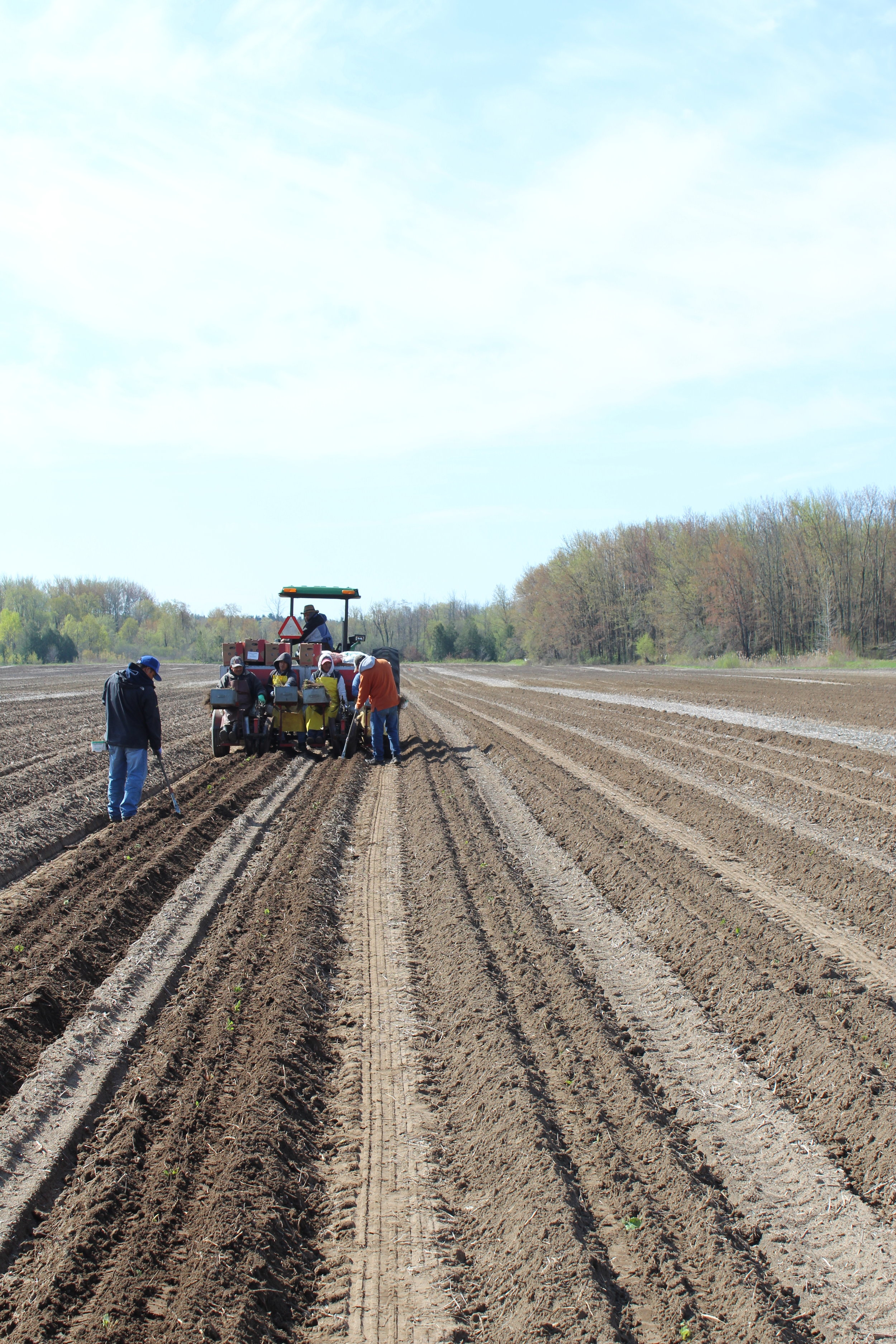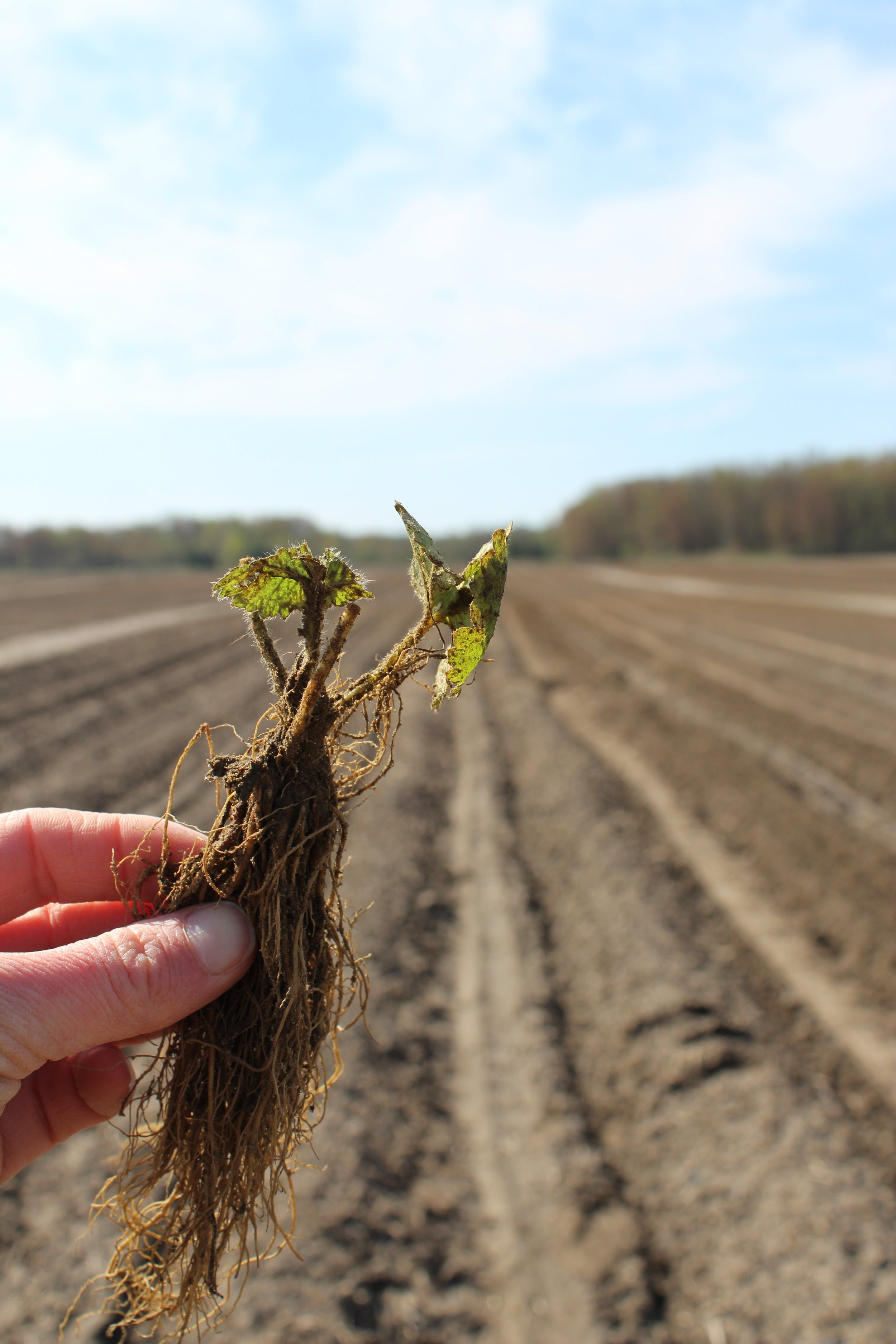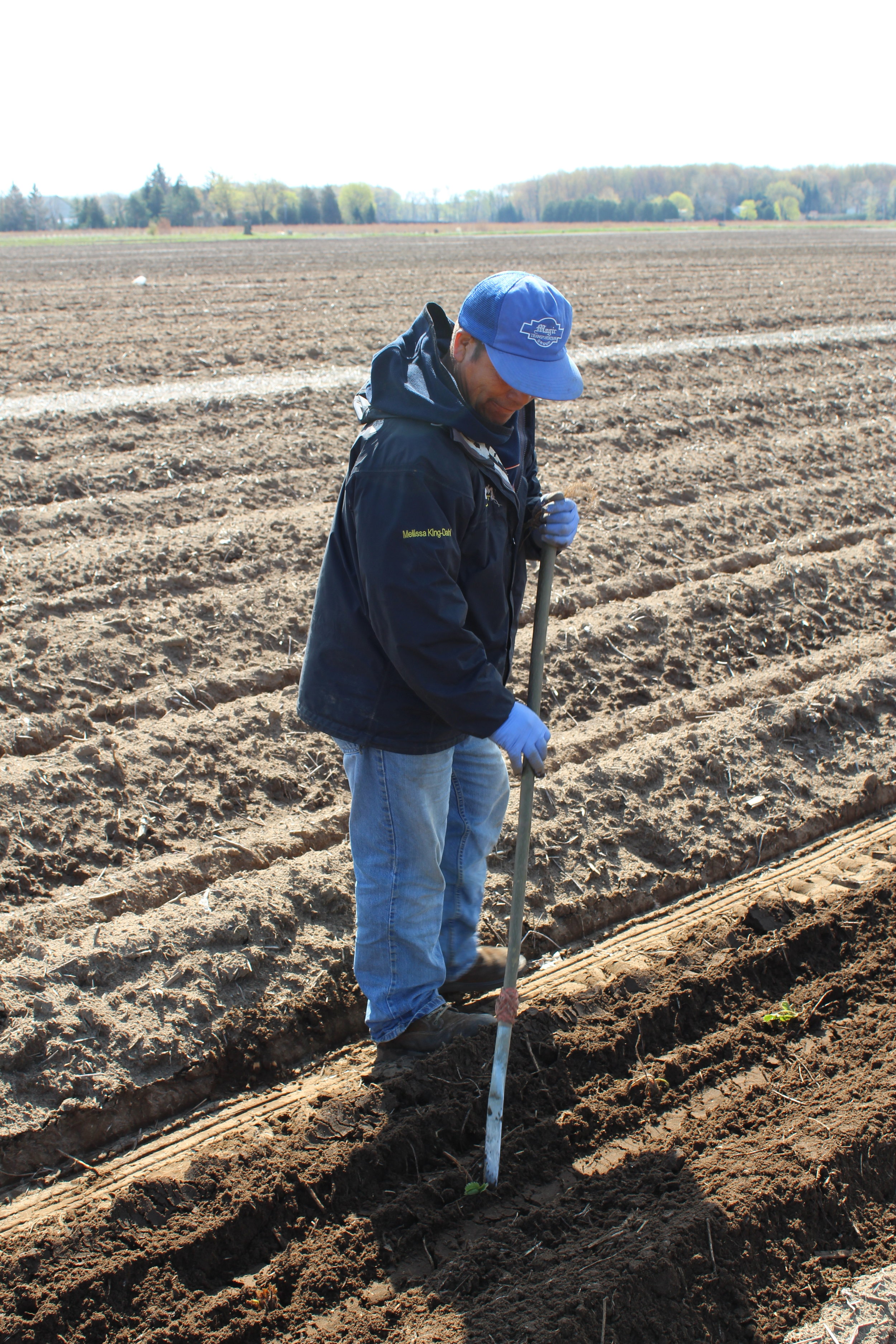This week we’re just wrapping up our conventional strawberry-planting. Remember a couple weeks back how we planted those day-neutral berries? Well, now we’re planting the conventional, ripe-for-the-picking-in-June varieties. These berries are planted as early as possible in May each year, depending on rain levels and temperature. These strawberry plants are planted directly into the soil. A planter helps speed up the process, but a field worker still has to walk behind and carefully check each plant to ensure it is planted at just the right depth – too shallow, and roots won’t take and the plant will die, but too deep and the plant will be smothered and won’t survive either!
The plants that are going into the ground right now are what’s called the “Mother Plants”, and we got them from a nursery. We plant approximately 6000-7000 plants per acre, and they are planted alongside a dose of fertilizer and a dose of water to help them along during their early stages of growth. The mother plants will hang out in the field, and eventually start to produce runners and daughter plants. Once these runners start to grow, the runners are raked into the centre of the row, where they will take root alongside their mother. All these now rooted plants will eventually produce fruit!
Conventional strawberries require a full year in the ground to establish before they produce fruit. During the first year, we remove the blossoms from the strawberry plants. Did you know that blossoms are what eventually turn into the strawberries? Pretty cool! So, by removing the blossoms, we prevent fruit from growing on these young plants. This may sound crazy, but by doing this we allow them to concentrate their energy on developing deep root systems and lots of runners, which will lead to better long-term production. Over the winter, we cover up the plants with a deep bed of straw, which helps insulate the berries from the cold. Once next spring rolls around, we rake off the straw from on top of the plants to expose them to the sunshine. We keep the straw around the edges, though, as it helps keep the weeds at bay -- as much as possible, anyways! We’re always at war with the weeds, it seems. The straw also helps keep the berries up off of the dirt, and ensures they are cleaner when harvested.
After that 1 full year in the ground, we can finally harvest strawberries! The conventional strawberries produce for approximately 1 month each season (in June!). We typically get 2 – 3 years of harvest from them, though! Any longer than that and the plants start to produce small berries and become susceptible to disease.
So the plants that we’re planting right now will produce berries for harvest in June of 2020. Right now, we’re harvesting from plants that were planted during 2016, 2017, and 2018. We continuously plant to ensure that we have a continuous supply of berries. Lots of time, planning, and mapping goes into the strawberry crop, but as with everything, it’s so worth it!








